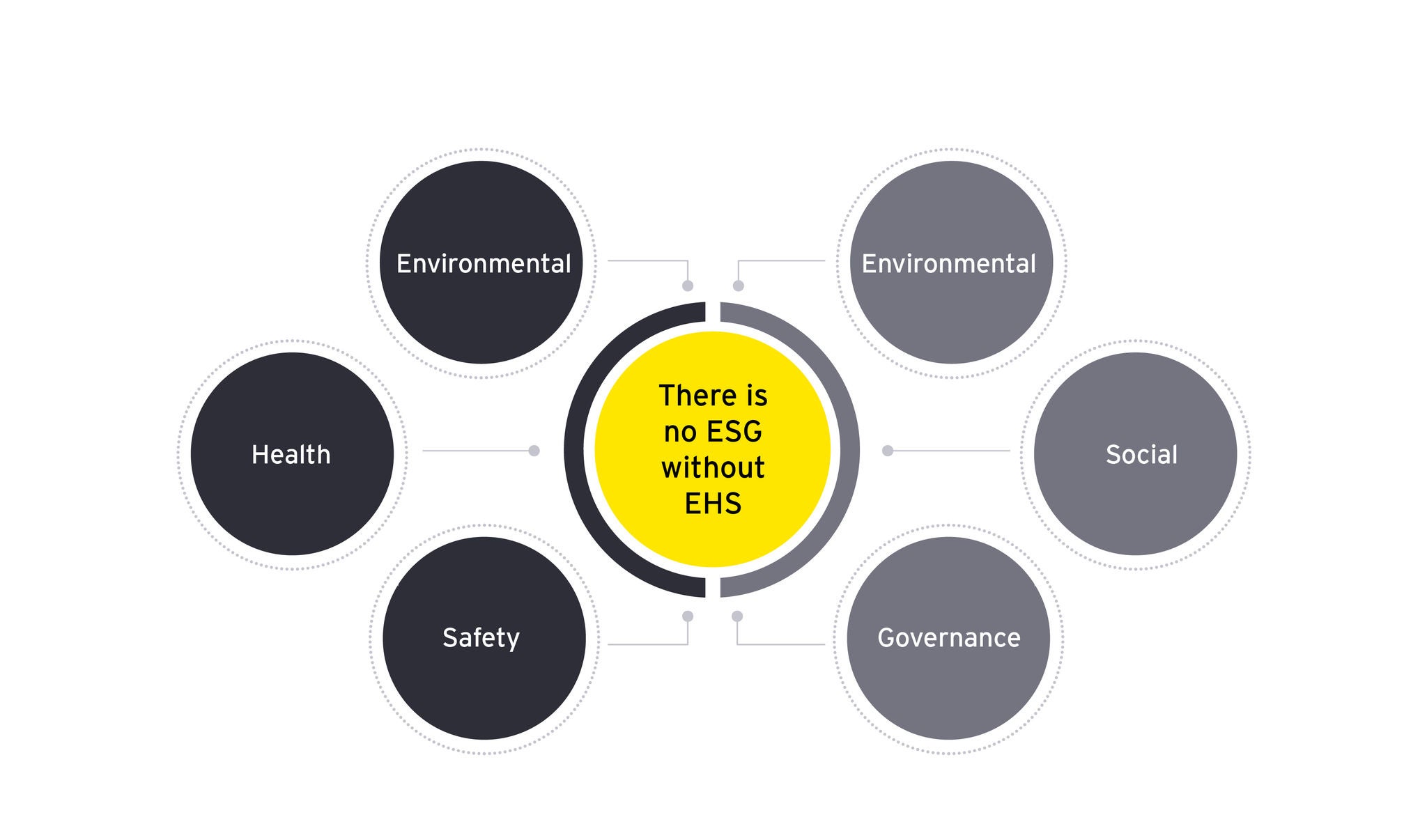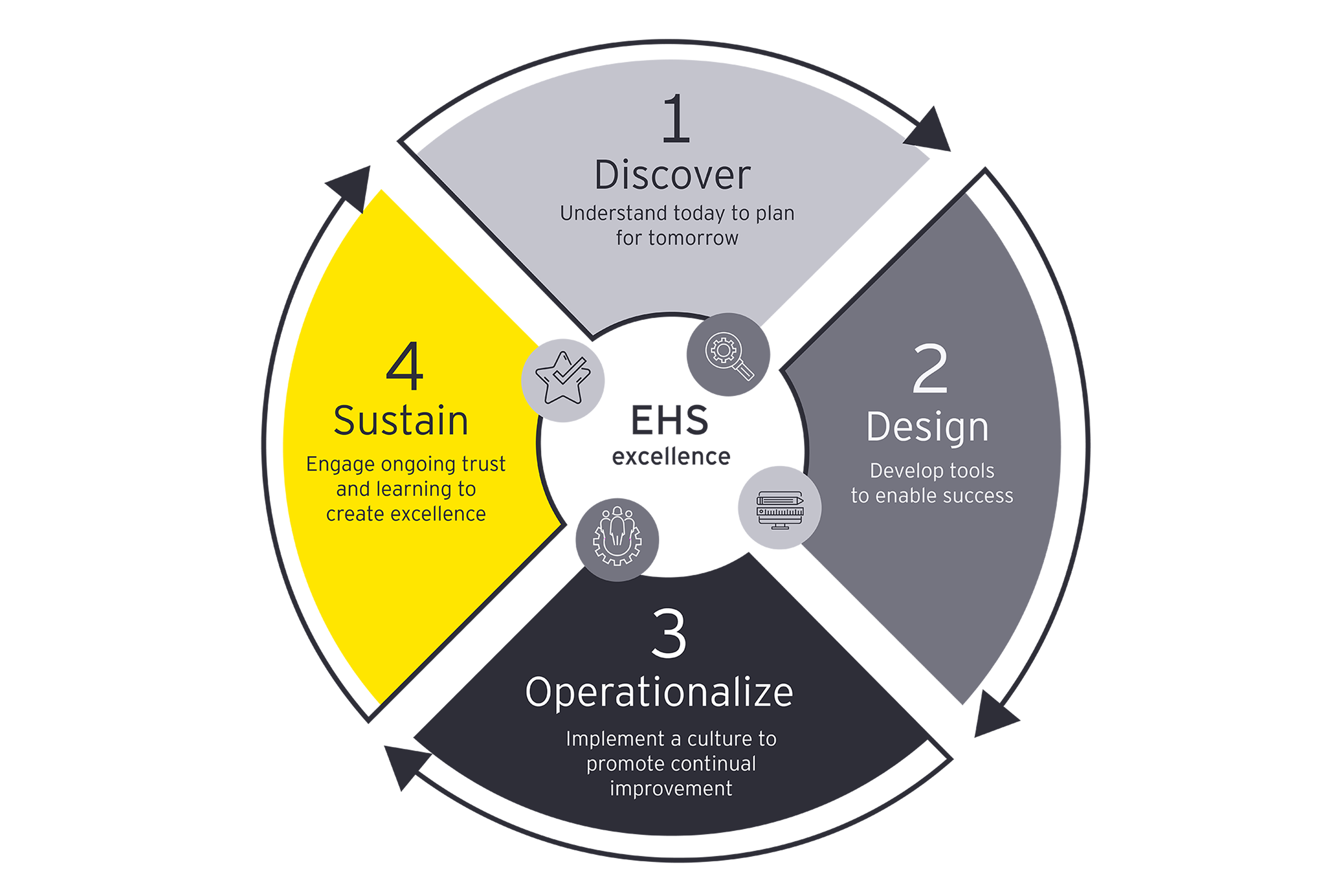EY refers to the global organization, and may refer to one or more, of the member firms of Ernst & Young Global Limited, each of which is a separate legal entity. Ernst & Young Global Limited, a UK company limited by guarantee, does not provide services to clients.
How EY can help
-
EY CCaSS teams can help reduce the risk of EHS incidents and support decision-making to improve outcomes associated with EHS. Find out how.
Read more
Board members:
- What is the role of EHS in leading the ESG agenda?
- How can EHS leadership programs help build ESG leadership capacity and sponsorship?
- How do we better integrate EHS and ESG initiatives and outcomes?
- How can EHS help operationalize ESG?
Functional heads:
- How can ESG leverage existing EHS data collation, reporting and assurance processes?
- Where will EHS reporting requirements overlap with the broader ESG reporting requirements?
- How do we better integrate EHS and ESG initiatives and outcomes?
- How can EHS help operationalize ESG?
The executive team:
- What is the role of EHS in leading the ESG agenda?
- How can EHS leadership programs help build ESG leadership capacity and sponsorship?
Supervisors:
- How can EHS leverage existing relationships to encourage collaboration?
- Where do opportunities exist for ESG and EHS to consolidate and collaborate?





